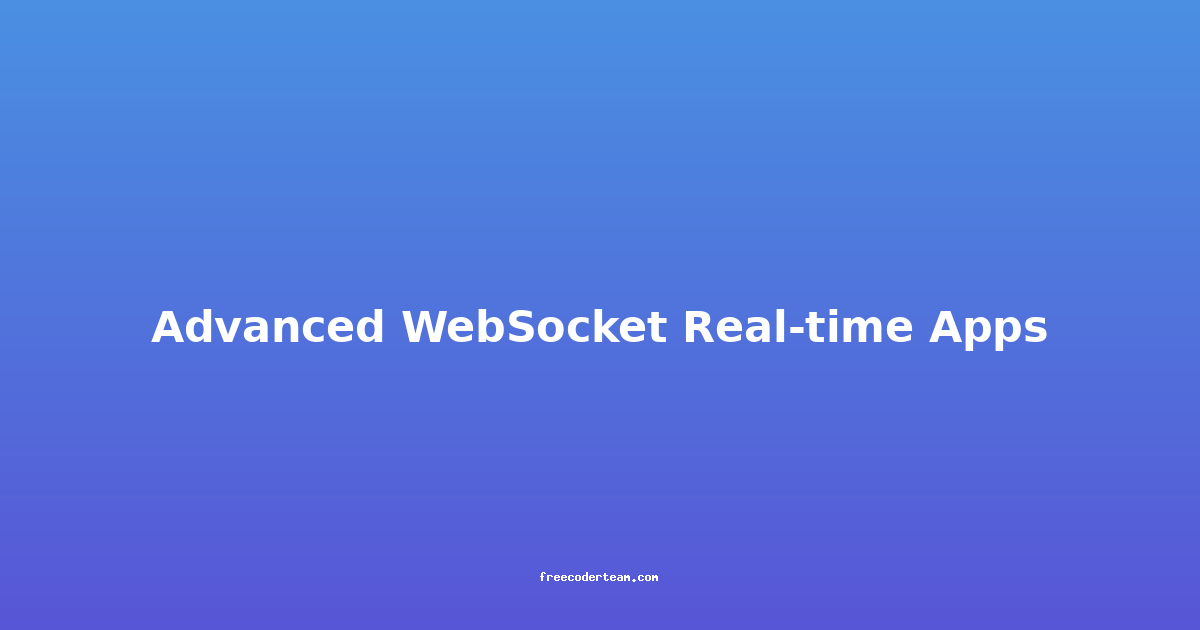Advanced Message Queue Systems: A Comprehensive Guide
Message queues play a critical role in modern software architecture, enabling decoupled communication between different services, improving scalability, and ensuring fault tolerance. Beyond basic message queues, advanced systems offer powerful features that empower developers to build robust, high-performance applications. In this blog post, we’ll explore advanced message queue systems, their features, best practices, and practical use cases.
Table of Contents
- What is a Message Queue?
- Why Use Advanced Message Queue Systems?
- Popular Advanced Message Queue Systems
- Key Features of Advanced Message Queues
- Best Practices for Using Advanced Message Queues
- Practical Use Cases
- Conclusion
What is a Message Queue?
At its core, a message queue is a software component that allows one part of a system to send a message to another part without having to know the exact location or timing of the recipient. It acts as an intermediary, storing messages until they are processed. This decoupling is crucial for building scalable, resilient systems.
How Message Queues Work
- Producer: A component that sends messages to the queue.
- Queue: A temporary storage for messages.
- Consumer: A component that retrieves and processes messages from the queue.
The queue ensures that even if the consumer is unavailable temporarily, messages are not lost.
Why Use Advanced Message Queue Systems?
Basic message queues handle simple use cases, but advanced systems offer features that are essential for large-scale, distributed systems:
- Scalability: Handle high message volumes and support distributed architectures.
- Durability: Ensure messages are not lost in the event of system failures.
- Advanced Routing: Direct messages to specific consumers based on rules.
- Transactional Support: Ensure message delivery is atomic and consistent.
- Monitoring and Visualization: Provide tools to track message flow and performance.
Advanced message queues are particularly useful in microservices, IoT, and DevOps workflows.
Popular Advanced Message Queue Systems
Several advanced message queue systems are widely used in the industry. Here are some of the most prominent ones:
1. RabbitMQ
- Overview: Open-source message broker written in Erlang.
- Features:
- Supports multiple message protocols (AMQP, MQTT, STOMP).
- High availability and clustering.
- Robust routing options (direct, fanout, topic, headers).
- Use Case: Real-time analytics, chat applications, and workflow automation.
2. Apache Kafka
- Overview: Distributed streaming platform designed for handling large volumes of data.
- Features:
- High-throughput and low-latency.
- Distributed by design, ensuring fault tolerance.
- Support for real-time data ingestion and processing.
- Use Case: Event streaming, log aggregation, and real-time data pipelines.
3. AWS SQS (Simple Queue Service)
- Overview: Fully managed message queue service by AWS.
- Features:
- Built for scalability and reliability.
- Supports standard and FIFO queues.
- Integration with AWS services (Lambda, S3, etc.).
- Use Case: Decoupling microservices in cloud-based applications.
4. Azure Service Bus
- Overview: Microsoft's cloud-based messaging solution.
- Features:
- Supports both queuing and pub/sub patterns.
- Integration with Azure Functions and other Azure services.
- High scalability and reliability.
- Use Case: Inter-service communication in hybrid cloud environments.
Key Features of Advanced Message Queues
Advanced message queue systems are distinguished by their robust feature sets. Here are some of the most important ones:
1. Message Routing
Advanced message queues allow you to route messages based on complex criteria. For example, in RabbitMQ, you can use exchange types like fanout, direct, topic, and headers to route messages to specific queues or consumers.
Example: RabbitMQ Topic Exchange
import pika
# Connect to RabbitMQ
connection = pika.BlockingConnection(pika.ConnectionParameters('localhost'))
channel = connection.channel()
# Declare a topic exchange
channel.exchange_declare(exchange='logs', exchange_type='topic')
# Publish a message with a routing key
routing_key = 'user.info'
message = 'Hello, advanced message queue!'
channel.basic_publish(exchange='logs', routing_key=routing_key, body=message)
print(f" [x] Sent '{routing_key}': {message}")
connection.close()
2. Durability and Persistence
Durability ensures that messages are not lost in the event of system failures. Advanced message queues often provide options to store messages on disk or in memory, depending on the use case.
Example: RabbitMQ Durable Queues
import pika
# Connect to RabbitMQ
connection = pika.BlockingConnection(pika.ConnectionParameters('localhost'))
channel = connection.channel()
# Declare a durable queue
channel.queue_declare(queue='task_queue', durable=True)
# Publish a message with persistence
message = 'Hello, durable queue!'
channel.basic_publish(
exchange='',
routing_key='task_queue',
body=message,
properties=pika.BasicProperties(
delivery_mode=2, # Make message persistent
)
)
print(f" [x] Sent {message}")
connection.close()
3. Transaction Support
Advanced message queues support transactions, ensuring that message delivery is atomic. This is crucial for use cases where message delivery must be guaranteed.
Example: RabbitMQ Transactions
import pika
# Connect to RabbitMQ
connection = pika.BlockingConnection(pika.ConnectionParameters('localhost'))
channel = connection.channel()
# Start a transaction
channel.tx_select()
try:
# Declare a queue
channel.queue_declare(queue='transaction_queue', durable=True)
# Publish a message
message = 'Transactional message'
channel.basic_publish(
exchange='',
routing_key='transaction_queue',
body=message,
properties=pika.BasicProperties(
delivery_mode=2, # Make message persistent
)
)
# Commit the transaction
channel.tx_commit()
print(f" [x] Sent {message}")
except:
# Rollback the transaction
channel.tx_rollback()
print(" [x] Transaction rolled back")
finally:
connection.close()
4. Monitoring and Visualization
Advanced message queues often come with built-in tools for monitoring message flow, performance, and system health. For example, RabbitMQ provides a web-based management UI, while Kafka has tools like Kibana for visualization.
Best Practices for Using Advanced Message Queues
To get the most out of advanced message queue systems, follow these best practices:
1. Define Clear Message Contracts
Ensure that messages have a well-defined structure and schema. This helps prevent compatibility issues between producers and consumers.
2. Use Appropriate Queue Types
Choose between standard queues (best effort delivery) and FIFO queues (guaranteed order) based on your use case. FIFO queues are useful for scenarios where message order is critical.
3. Implement Retry Mechanisms
Use retry policies to handle transient failures. Many message queues support dead-letter queues, which can be used to store failed messages for later analysis.
4. Monitor and Alert
Set up monitoring for message queues to detect bottlenecks, high latency, or failed messages. Use tools like Prometheus, Grafana, or the built-in monitoring features of your queue system.
5. Decouple Services
Use message queues to decouple services, allowing them to scale independently. This improves system resilience and reduces downtime.
Practical Use Cases
Advanced message queues are versatile and can be applied in a variety of scenarios:
1. Real-Time Messaging
In chat applications or live streaming platforms, message queues like RabbitMQ or Kafka can be used to route messages to the correct recipients in real time.
2. Event-Driven Architectures
Advanced message queues are crucial in event-driven architectures, where events trigger actions in different parts of the system. Kafka is often used for this purpose due to its high throughput and low latency.
3. Microservices Communication
In microservice architectures, message queues act as the glue between services. AWS SQS or Azure Service Bus can facilitate reliable communication between distributed microservices.
4. Batch Processing
Message queues can be used to batch process large volumes of data. For example, Kafka can ingest real-time data streams and feed them into batch processing systems like Hadoop or Spark.
Conclusion
Advanced message queue systems are essential for building modern, scalable, and resilient applications. They offer features like message routing, durability, transaction support, and monitoring, which are critical for handling complex use cases. By understanding the capabilities of systems like RabbitMQ, Kafka, AWS SQS, and Azure Service Bus, developers can design architectures that are both efficient and fault-tolerant.
When working with message queues, always define clear contracts, choose the right queue types, and implement retry mechanisms. By following best practices and leveraging the power of advanced message queues, you can build robust systems that can handle the demands of today's digital world.
Stay tuned for more insights on distributed systems and advanced messaging! 🚀




